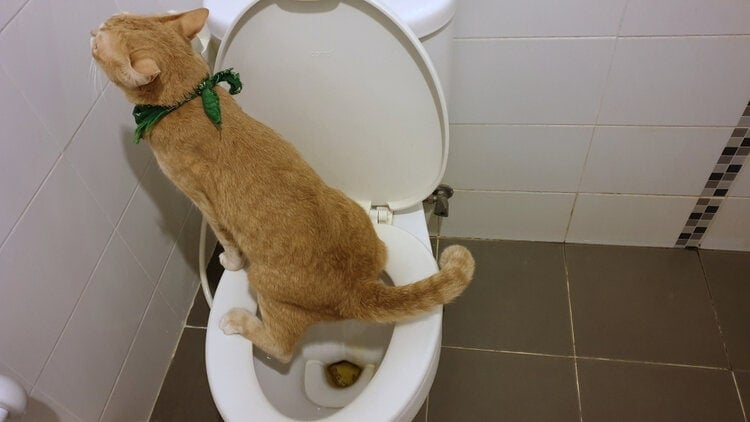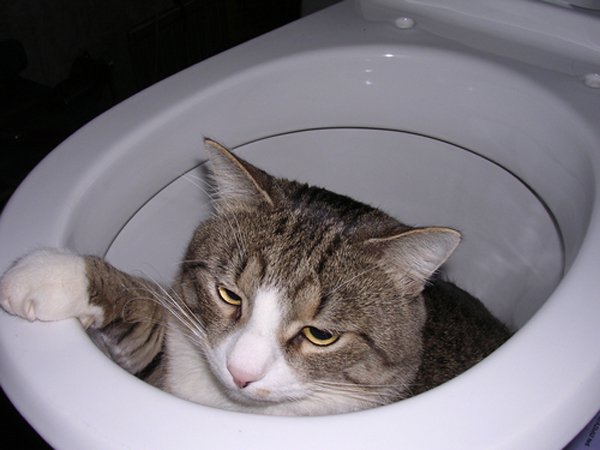Our Significance of Not Flushing Animal Waste Down the Toilet
Our Significance of Not Flushing Animal Waste Down the Toilet
Blog Article
This article in the next paragraphs relating to 4 Reasons Why Dog Poop Cleanup is Important is highly stimulating. You should read it.

When it concerns getting rid of waste, particularly animal waste, many people often consider the convenient choice of flushing it down the commode. Nevertheless, this apparently simple solution can have major repercussions for the setting and public health. In this article, we'll explore why flushing animal waste down the toilet is a bad concept and supply alternative techniques for proper disposal.
Intro
Correct waste disposal is essential for keeping ecological sustainability and public health. While it might seem harmless to purge animal waste down the toilet, it can result in various issues, both for the setting and human wellness.
Risks of flushing pet waste
Environmental influence
Flushing animal waste presents harmful microorganisms and microorganisms right into waterways, which can negatively influence water communities. These microorganisms can contaminate water sources and damage marine life, interfering with fragile communities.
Public health concerns
Animal waste contains harmful germs such as E. coli and Salmonella, which can pose significant health and wellness threats to human beings. Flushing pet waste down the commode can contaminate water products, causing the spread of diseases and infections.
Alternatives to flushing
As opposed to flushing animal waste down the bathroom, there are numerous different disposal methods that are extra eco-friendly and hygienic.
Composting
Composting pet waste is an environmentally friendly means to deal with it. By composting, raw material is broken down into nutrient-rich soil, which can be made use of to feed gardens and plants.
Garbage dump disposal
Disposing of pet waste in a landfill is one more choice. While not as eco-friendly as composting, it is a more secure option to flushing, as it stops the contamination of water sources.
Animal garbage disposal systems
There are specific pet waste disposal systems available that safely and hygienically throw away pet waste. These systems often make use of enzymes to break down waste and remove odors.
Actions to correct pet garbage disposal
To make sure proper disposal of pet waste, follow these steps:
Scooping and nabbing waste
Frequently scoop and bag pet waste making use of naturally degradable bags. This stops waste from infecting the setting.
Making use of marked waste bins
Dispose of bagged pet waste in designated waste containers, such as compost containers or garbage dump bins. Avoid flushing it down the toilet whatsoever expenses.
Cleaning up litter boxes and animal areas routinely
Consistently clean litter boxes and pet locations to avoid the buildup of waste and microorganisms. Use pet-safe cleansing products to keep hygiene.
Advantages of proper disposal methods
Embracing proper disposal approaches for animal waste uses several benefits:
Reduced environmental pollution
Appropriate disposal methods decrease the danger of environmental pollution, securing rivers and communities from contamination
Decreased risk of water contamination.
By staying clear of flushing animal waste down the toilet, the danger of water contamination is substantially reduced, guarding public health.
Enhanced cleanliness and hygiene
Appropriate disposal approaches promote better sanitation and hygiene, developing a much safer atmosphere for both people and pets.
Verdict
Finally, purging animal waste down the bathroom is dangerous to the atmosphere and public health. By embracing different disposal methods and following correct waste administration methods, we can reduce the adverse influence of pet waste and contribute to a cleaner, healthier earth.
What To Do With Dog Poo – The Do's And Don'ts Of Disposing Of Faeces
Dog poo bins
Some councils provide dedicated dog waste bins in popular dog-walking areas that can take dog poo that has been bagged but you can legally dispose of dog waste in any public litter bin, as long as it is securely bagged. This also applies to your wheelie bin at home.
Do not flush
Water companies do not recommend flushing dog faeces down the toilet because certain parasites can survive the water processing treatment and are potentially harmful to humans. You should also never consider flushing dog poo that has been bagged down the toilet as the bags will not break down and instead create severe blockages in the sewage system.
In the woods
The Forestry Commission promotes a ‘stick and flick’ method for dealing with waste in the woods. This means finding a stick and using it to flick any poo from off the path so that it is out of the way of other walkers. You could also bury it as long as it is not in an area where there might be livestock.
Livestock
Parasites found in dog poo can be transmitted to livestock if they inadvertently eat infected faeces that has been left on grazing land. This could result in the death of sheep or abortion in cattle so you should always make sure you pick up your dog’s waste in fields where livestock could be present.

Consistently clean litter boxes and pet locations to avoid the buildup of waste and microorganisms. Use pet-safe cleansing products to keep hygiene.
Advantages of proper disposal methods
Embracing proper disposal approaches for animal waste uses several benefits:
Reduced environmental pollution
Appropriate disposal methods decrease the danger of environmental pollution, securing rivers and communities from contamination
Decreased risk of water contamination.
By staying clear of flushing animal waste down the toilet, the danger of water contamination is substantially reduced, guarding public health.
Enhanced cleanliness and hygiene
Appropriate disposal approaches promote better sanitation and hygiene, developing a much safer atmosphere for both people and pets.
Verdict
Finally, purging animal waste down the bathroom is dangerous to the atmosphere and public health. By embracing different disposal methods and following correct waste administration methods, we can reduce the adverse influence of pet waste and contribute to a cleaner, healthier earth.
What To Do With Dog Poo – The Do's And Don'ts Of Disposing Of Faeces
Dog poo bins
Some councils provide dedicated dog waste bins in popular dog-walking areas that can take dog poo that has been bagged but you can legally dispose of dog waste in any public litter bin, as long as it is securely bagged. This also applies to your wheelie bin at home.
Do not flush
Water companies do not recommend flushing dog faeces down the toilet because certain parasites can survive the water processing treatment and are potentially harmful to humans. You should also never consider flushing dog poo that has been bagged down the toilet as the bags will not break down and instead create severe blockages in the sewage system.
In the woods
The Forestry Commission promotes a ‘stick and flick’ method for dealing with waste in the woods. This means finding a stick and using it to flick any poo from off the path so that it is out of the way of other walkers. You could also bury it as long as it is not in an area where there might be livestock.
Livestock
Parasites found in dog poo can be transmitted to livestock if they inadvertently eat infected faeces that has been left on grazing land. This could result in the death of sheep or abortion in cattle so you should always make sure you pick up your dog’s waste in fields where livestock could be present.

Do you really like more info about Don't Flush Your Pets Poo Down The Loo, Vet Warns? Post a remark down the page. We'd be delighted to listen to your ideas about this blog. We are looking forward that you visit us again in the near future. Don't hesitate to take the opportunity to share this post if you enjoyed it. I appreciate reading our article about .
Call Today Report this page